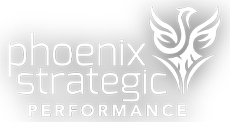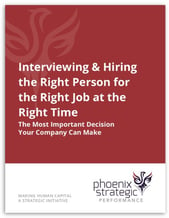HUMAN ASSET MANAGEMENT STRATEGY AND THE CONTINUOUS IMPROVEMENT LOOP
Why do organizations invest time and effort into continuous process improvement and stop there? When people drive the responsibility for continuous process improvement, shouldn’t there also be an aligned Human Asset Continuous Improvement Loop for those who drive the process?
How often do the following questions come up?
- Why aren’t my people coming up with solutions to problems they encounter?
- Why can’t employees see beyond the next step?
- Why isn’t the quality control/assurance function as proactive as it should be?
- What has happened to the disappearing skills of:
- Trend Spotting?
- Problem Identification?
- Problem Solving?
- Critical Thinking?
- Why aren’t people planning, recommending, and thinking about business impact analysis?
Enterprise Thinking: The New Business Skill
Our fast-paced, changing world requires that an increasing number of employees demonstrate the above knowledge and skills to meet the challenges of today’s business environment. We now expect that employees, working far lower in the organization than the executive suite, should be able to demonstrate these skills. We expect that even the lowest level employee should demonstrate a degree of these skills. As businesses grow and adapt to change, these skills are required at every organizational level to compete in a dynamic marketplace.
If you have ever considered or been frustrated by these questions, either one or all of them, you need to evaluate your current employees against a new set of job and role criteria. And that’s where the job description plays a fundamental role. It should:
- Be progressive, future-focused, and continuous
- Reside in the business units where work gets done
- Be dynamic, developmental, upskilling, and prevent skill obsolescence
- Forecast human capital capacity
- Align with growth and productivity
- Strive for more winners
Dynamic Job Descriptions: Just How Detailed Should They Be?
Today, job descriptions can no longer reside in a file within HR. In addition to HR, the job description should reside in, be developed, and be managed by the operating department where the work is done. Therefore, the job description should truly and deeply define the job for the sake of the job and the department's goals rather than be used as an administrative function by HR. I am often asked how detailed should the job description be. And when is too much detail too much?
If the job description is meant to describe the job, it needs as much detail as possible. Why? Make sure the job description is aligned with the organization’s strategy and business initiatives and not written for the person who may already be in the role. Job descriptions should be aspirational, aligned with company goals, and not written to accommodate the incumbent employee. Job descriptions should include the following:
- Summary of the Job – (a real and current one)
- Reporting Relationship (hierarchy)
- Critical Organizational Interactions (the dynamic matrix organization)
- Routine Work
- Non-Routine Work
- Stretch Tasks, If Appropriate
- Competencies
- Hard Skills
- Soft Skills
- Knowledge
- Business Acumen, Enterprise Thinking, and Business Skills
- Date to Review the Job Description
Robust, Dynamic Job Descriptions
For a job description to be robust and dynamic, it must be reflected in a current organizational chart that will define its role and accountability. The organization chart should reflect the strategic goals and business initiatives driven by the current business strategy.
Job descriptions should be used for the following processes:
- Interviewing and Hiring
- Performance Review
- Employee Development Plans
- Human Capital Gap Analysis
- Complete the Continuous Improvement Loop Back to Human Capital Alignment and Business Strategy
At the Center of It All
As you can see, the job description is right in the middle of all these processes, and if they are not done well or are not as responsive as they should be, they impact everything else. Download our full presentation on the strategic role of the job description we recently presented to the Arizona Commerce Authority. This presentation will show how robust job descriptions can optimize your organization's processes, products, and people.





